How to ensure a secure, long-lasting power connection for your electrical installation
Power connections are the basis of electrical installations. As the prime interface for our customers, power connection safety and reliability is not just advisable, it’s essential. Furthermore, reliable connections are critical in terms of protecting installations against electrical fires, which can inadvertently start as a result of poor or loose connections. A number of factors can contribute to the issue of faulty connections. One of them is the creep effect on cables – which results in the loss of pressure in power connections.
Schneider Electric’s EverLink™ is a creep-compensating technology that mitigates the loosening effects of creeping. This paper discusses the effects of creeping and how EverLink technology protects customers from its associated risks, to ensure a reliable and long-lasting connection.
Given that safety, maintenance and reliability are the most important priorities for electrical installation power connections, it is no surprise that the ‘creep effect’ is an important consideration for facility managers who are looking to maintain their power cables in optimal condition.
Creep is a state in which cable material begins to deform when submitted to stress. High and low temperature cycles have the effect of increasing the creep in cable materials due to their viscosity properties. In a worst-case scenario, creep can be the cause of electrical fires and other electrical-related damage.
In the domain of electrical distribution, power connections are either screw-in or screwless. The main difference between the two standards relates to the force exerted on the cables by the connecting force. As we will see below, each has their advantages and disadvantages that should be taken into consideration when choosing products or setting maintenance schedules.

Screw-in connections
With screw-in connections, the force comes from a threaded element like a screw or a bolt. The main advantage of screw-in connections is that a substantial force can be applied on conductors – which gives a good spreading and compacting of cables, and thus, a lower contact resistance. Moreover, screw-in connections offer an incoming space that is big enough to plug in several cables. However, screw-in connections can be sensitive to vibrations, which can lead to overheating and thus cable creeping. This means that it is necessary to regularly re-tighten power connections in order to minimize the risk of potential incidents arising as a result of loose connections.
Screwless connections
With screwless connections on the other hand, the force originates from a spring element, such as spring blades or elastic jaws. The force exerted by screwless connections is usually less than the force from a threaded element for the same connection. One of the drawbacks of screwless connections is the limitation of having only one cable per connection. The main advantage of this type of connection is the constant force over time on the cable, no matter the level of creep associated with the cable.
Connection constraints
Power connections can be subjected to a range of negative effects which can adversely impact their behavior: micro-motions due to vibrations, thermal dilatations, or the creep phenomenon all tend to increase contact resistance due either to surface oxidation during relative motion or lower contact pressure.
What is creep?
Cause and physical parameters
Metals such as copper and aluminum, which are commonly used in cables, are considered elasto-plastic, however, they are subject to delayed permanent deformations under particular conditions of stress, temperature, even if the load generates stresses lower than yield stress. Creep is a state in which a material, subjected to permanent and constant stress, begins to deform permanently over a period of time. High and low temperature cycles have the effect of increasing the creep in materials due to their viscosity properties – indeed, extreme temperatures can modify the material structure. In summary, time, mechanical stress and temperature are all factors that affect the behavior of cables. In general the creep impact has a direct relation with the diameter of the cable; the thicker the cable, the greater the effect of creep. With electrical connections, a slight change in the cable shape may lead to lower contact pressure, which gives cause for concern. Furthermore, in electrical cables, especially flexible cables, another phenomenon occurs: the various wires within the cable rearrange themselves in such a way that they occupy the entire available space, due to the force applied on them.
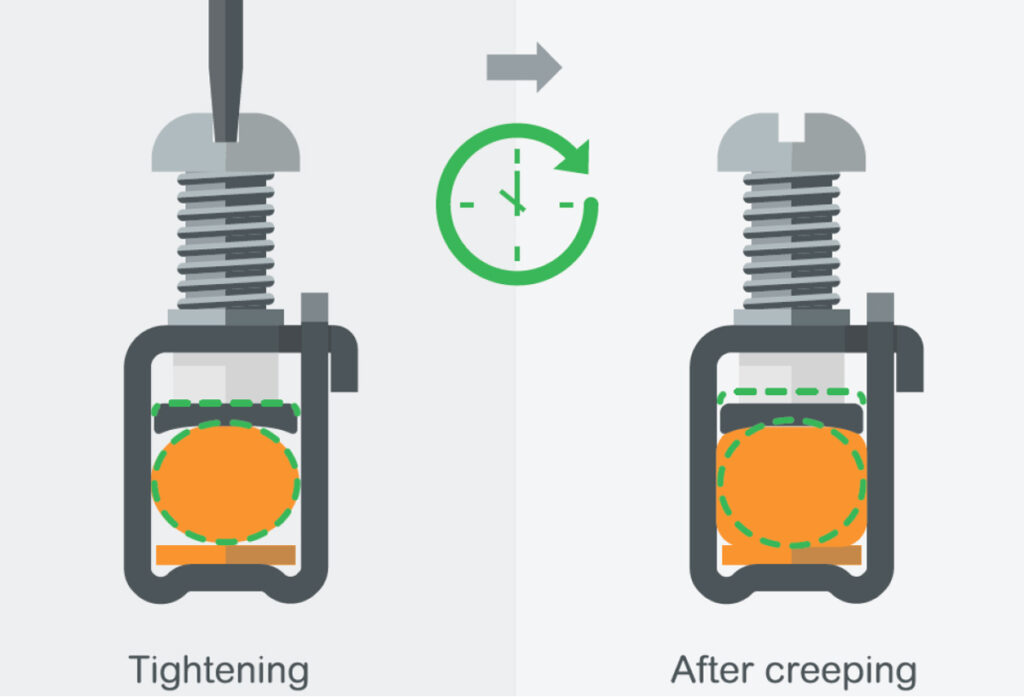
Impact on assets
It is worth mentioning that a screw-in connection features several key parameters that ought to be taken into account: materials, cable size, screw, and lug. After tightening, the torque applied will be converted into force and the rotation will be converted into translational displacement of the screw plate, resulting in a final height.
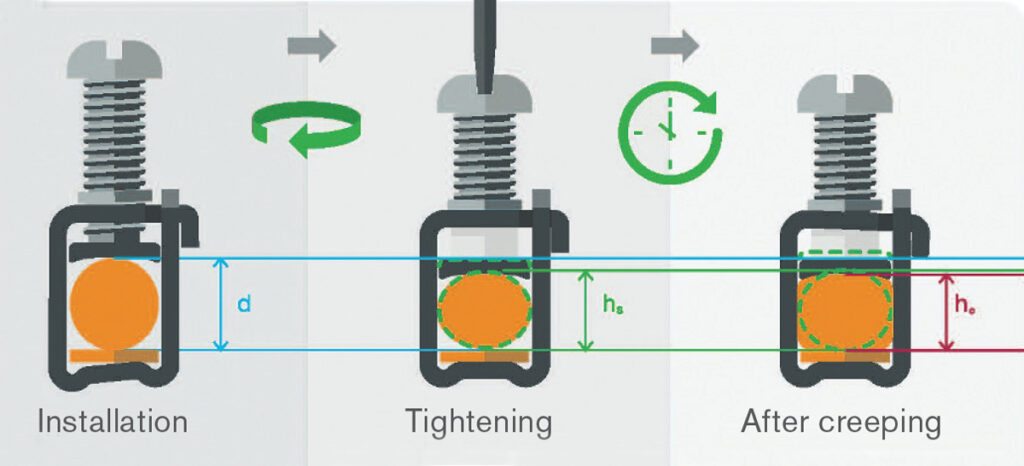
The diameters of the wires illustrated above are linked to permanent deformation as a result of elastic deformation, (which is reversible), and plastic or creep deformation, (which is permanent) of the cable. The initial diameter is illustrated below, (see cable diameter d). After screwing, the diameter becomes Hs due to the initial compression of the cable. Finally, over time the cable is subject to creepage and the final diameter is Hc. Standard lugs connections are prone to creeping because the only elastic reserve in the assembly is “stored” in the lug itself. However, maximum deformation inside the cable is the sum of permanent deformations (plastic during tightening and creep deformations), in addition to elastic deformations which are reversible. When the force is reduced, the cable releases the elastic deformations only, so the force may not be sufficient to ensure correct contact pressure.
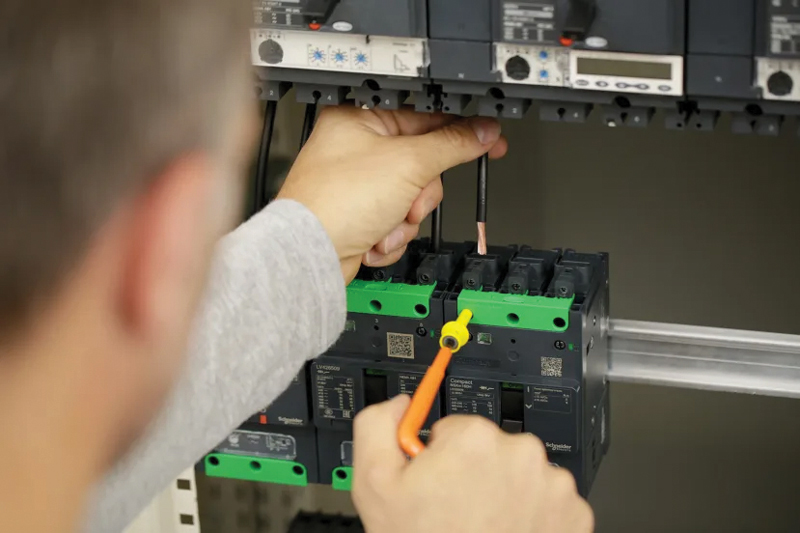
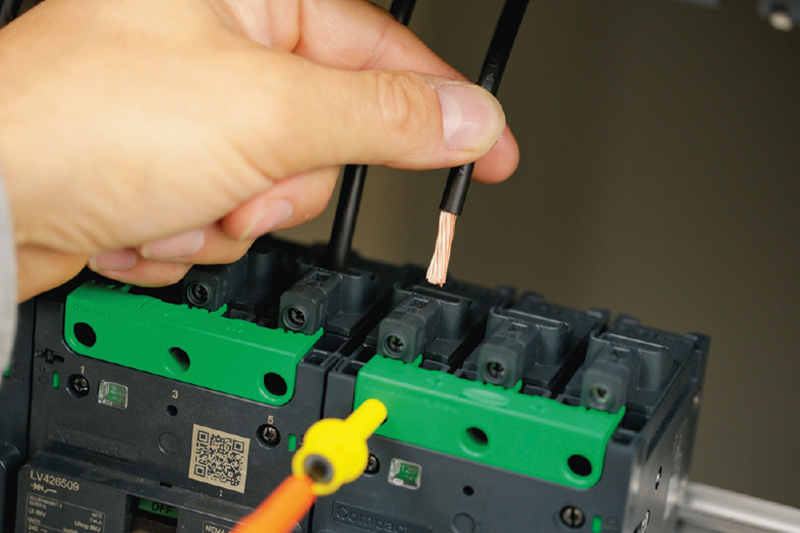
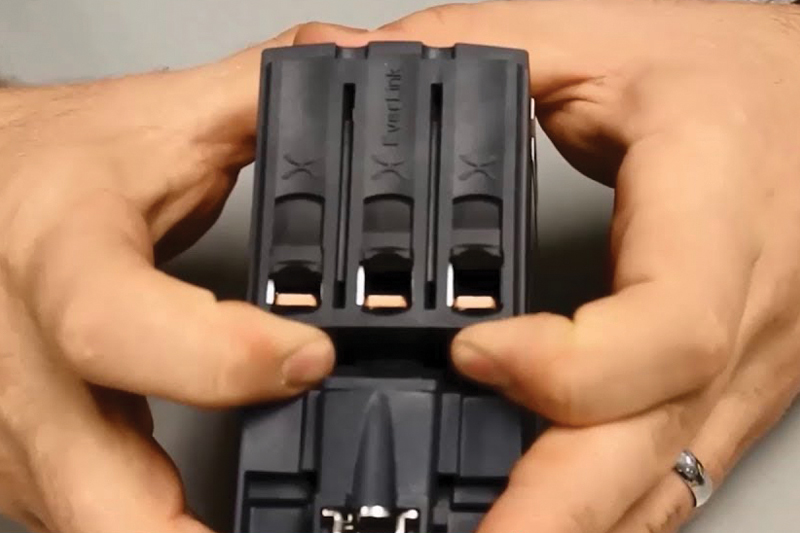
Part II The solution to the problems discussed here will be in the next issue.


